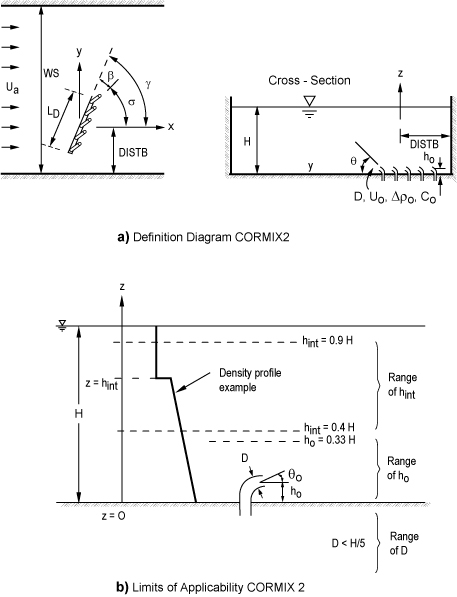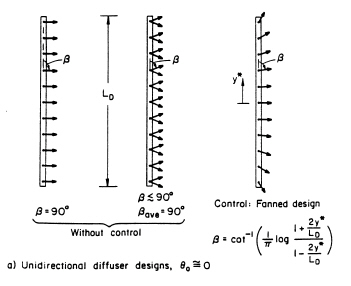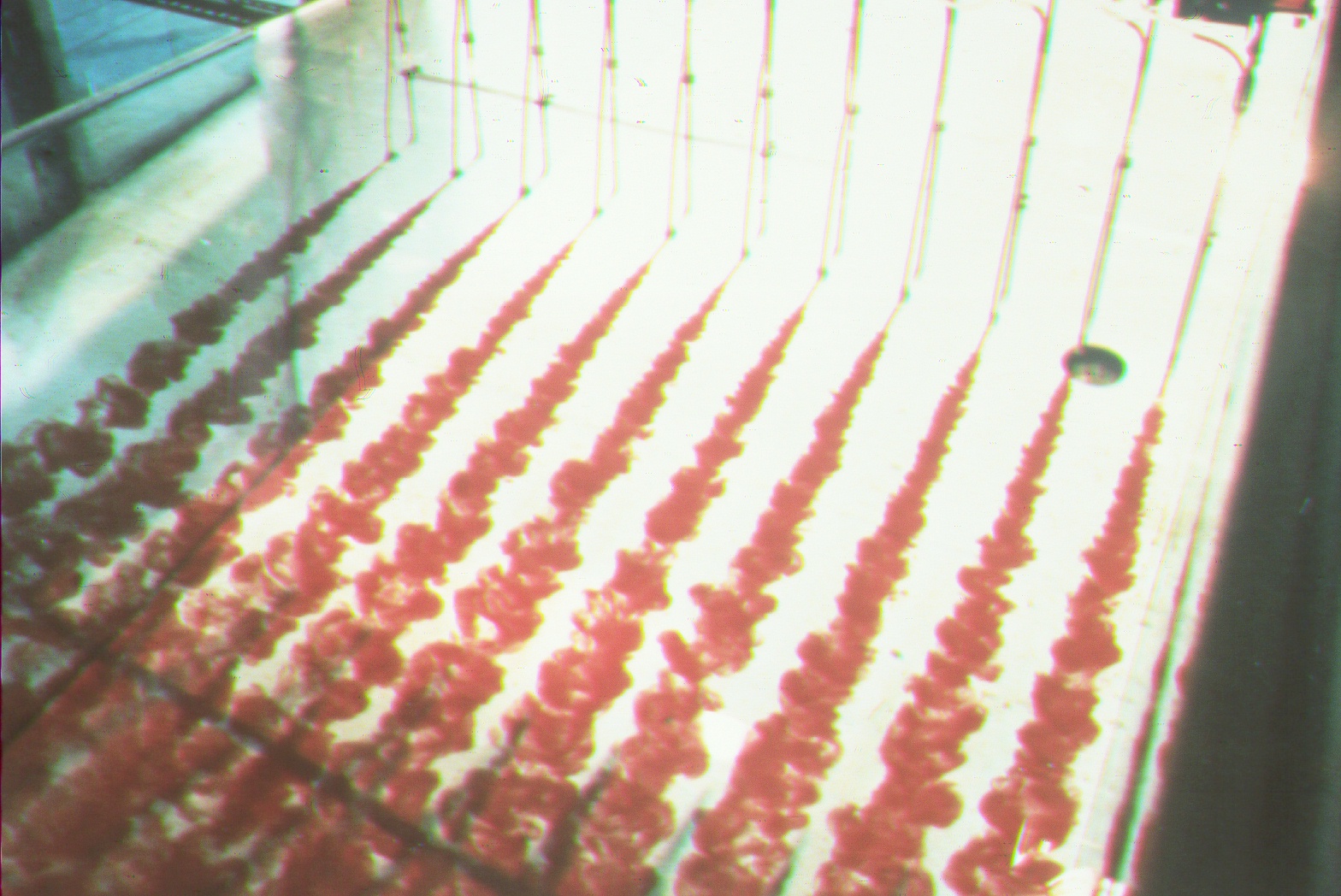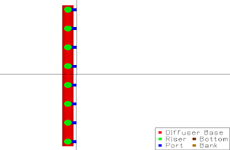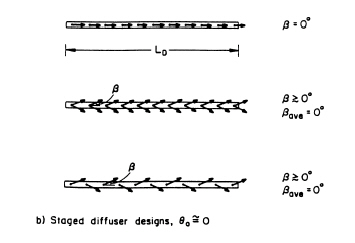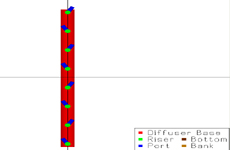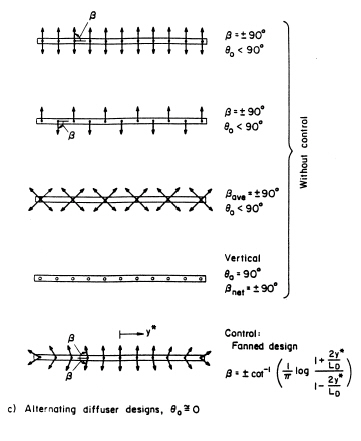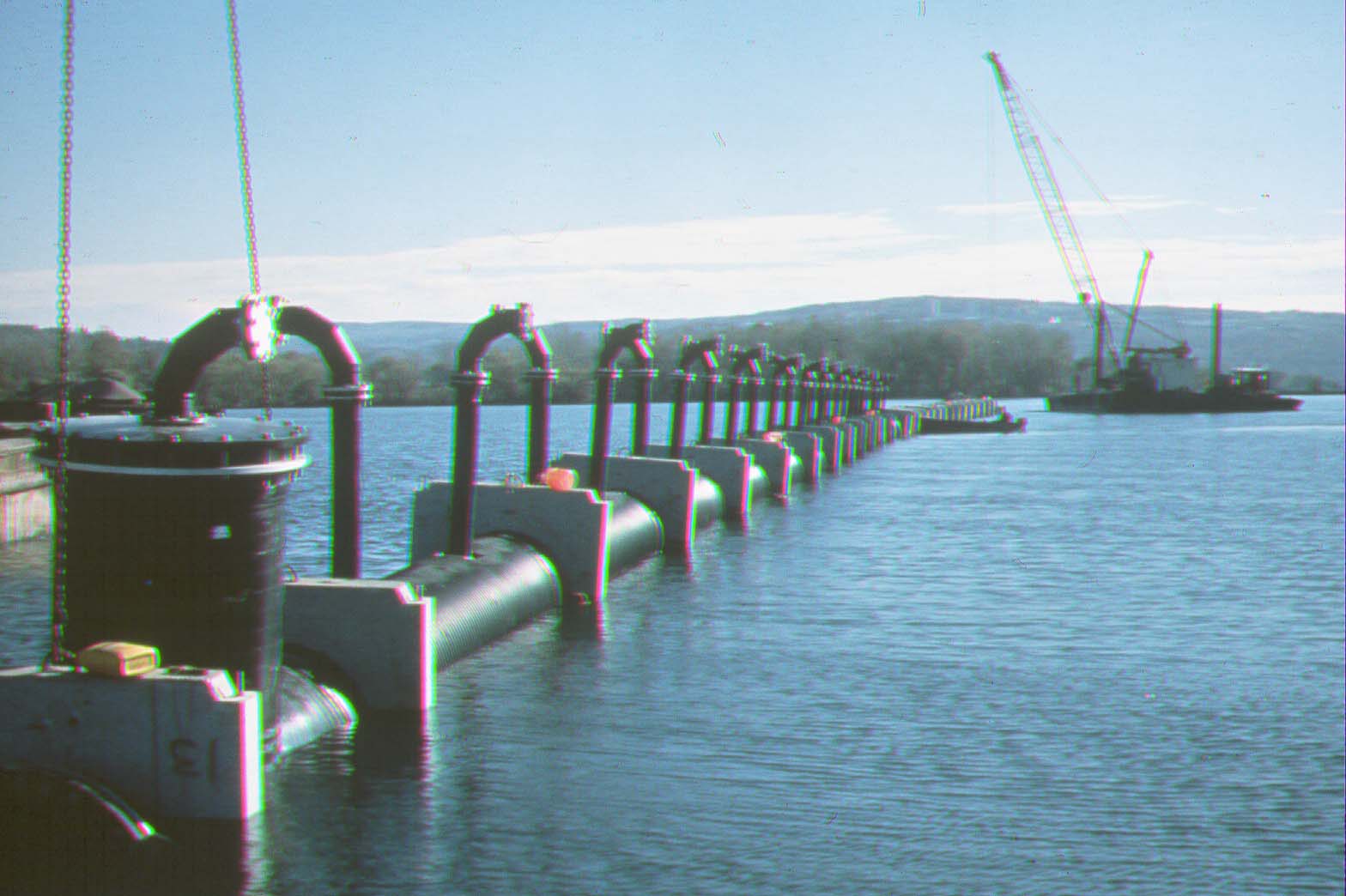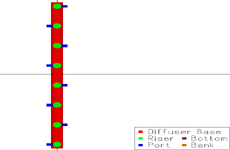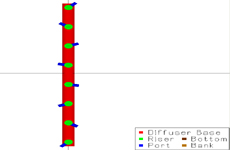A multiport diffuser is a linear structure consisting of many more or less closely spaced ports or nozzles
which inject a series of turbulent jets at high velocity into the ambient receiving water body.
These ports or nozzles may be connected to vertical risers attached to an underground pipe or tunnel or they may simply be openings in a
pipe lying on the bottom.
For complex hydrodynamic cases (e.g. alternating diffusers or an unstable near-field),
CORMIX2 uses the "equivalent slot diffuser" concept and thus neglects the details of the individual jets issuing from
each diffuser port and their merging process, but rather assumes that the flow arises from a long slot discharge with equivalent
dynamic characteristics.
Hence, if details of the effluent flow behavior in the immediate diffuser vicinity are needed, an additional CORMIX1
simulation for an equivalent partial effluent flow may be recommended.
Source Characterization Assumptions:
- All subsystems require that the actual cross-section of the water body be described or schematized as a rectangular straight uniform channel that may be bounded laterally or unbounded. The ambient velocity is assumed to be uniform within that cross-section.
- In addition to a uniform ambient density possibility, CORMIX2 allows for three generic types of ambient stratification profiles to be used for the approximation of the actual vertical density distribution.
- All CORMIX subsystems are in principle steady-state models, however new developments allow the analysis of unsteady mixing in tidal environments.
- All CORMIX systems can predict mixing for both conservative and non-conservative first-order decay processes, and can simulate heat transfer from thermal plumes.


